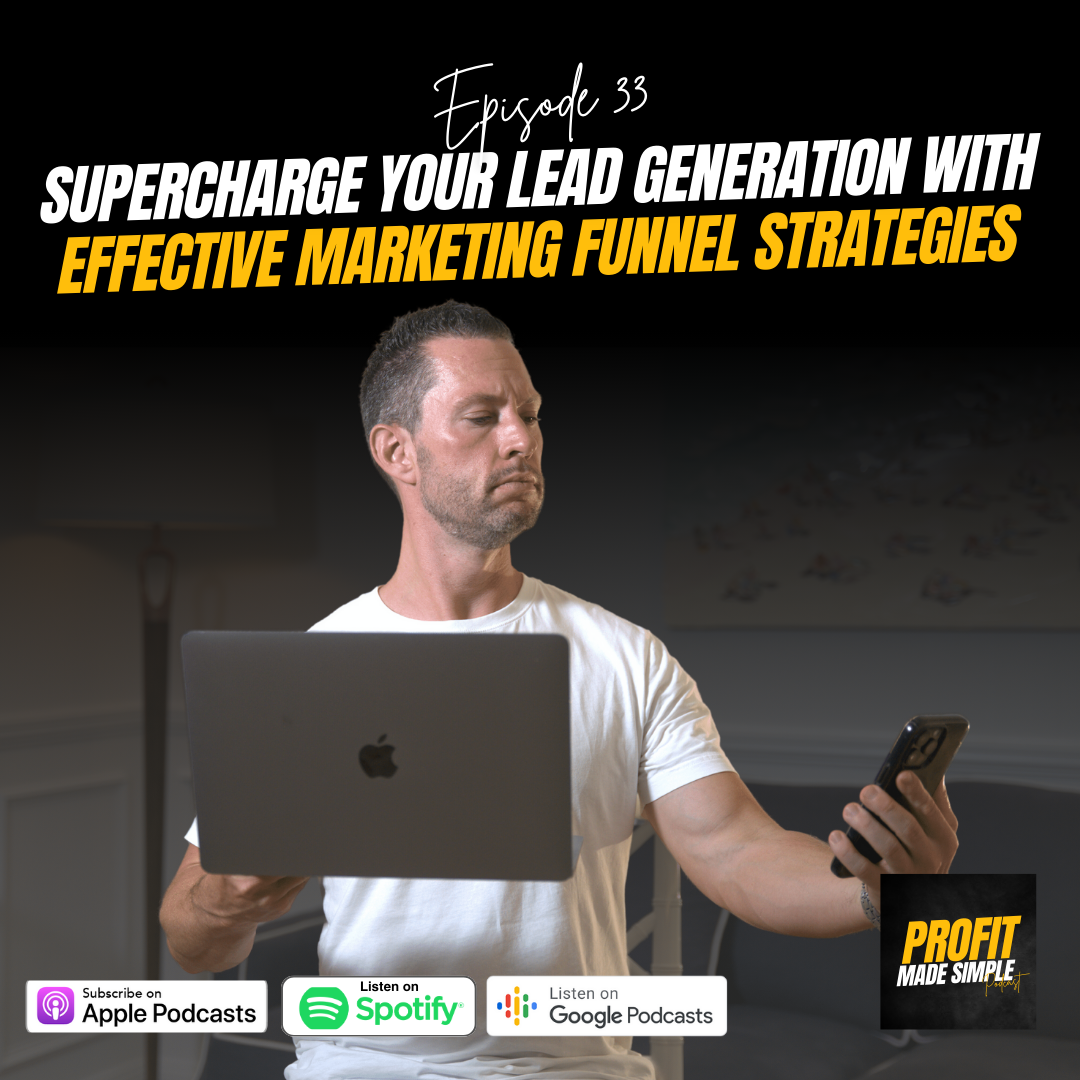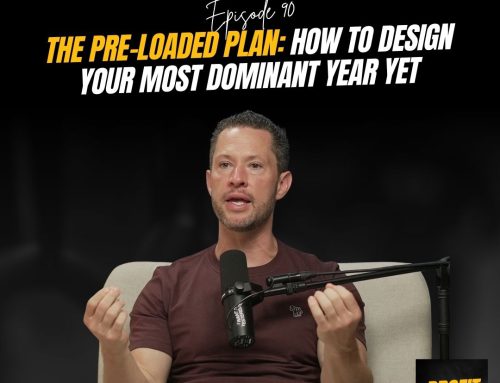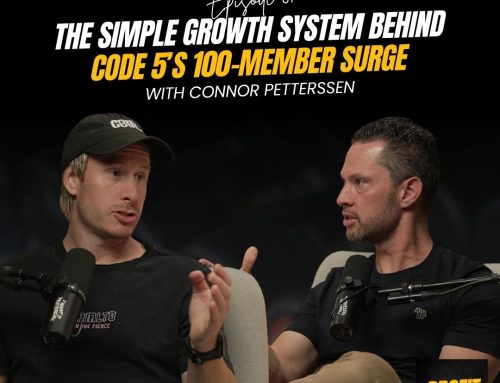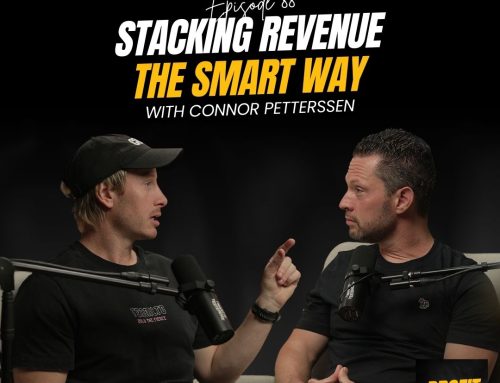In today’s fiercely competitive fitness industry, fitness business marketing plays a pivotal role in attracting, nurturing, and converting leads. Many fitness business owners I speak to say, “I need more leads.” They believe that if they can only generate more leads, their business will grow.
While lead generation is essential, the focus should not solely be on increasing the quantity of leads but also on improving the quality of leads.
In this blog post, based on insights from my latest podcast episode, we’ll dive into how you can master the art of fitness business lead generation.
The Problem with Traditional Fitness Business Marketing
Let me begin with a personal story. In the early stages of my relationship with my partner, Marissa, I knew I wanted to spend the rest of my life with her. However, she wasn’t quite convinced yet. I had to build trust and nurture the relationship, showing her that I was a great catch.
Now imagine if I had walked up to her on day one and asked her to commit her life to me—what do you think the answer would have been? Likely a big “no.”
In fitness business marketing, many owners make a similar mistake. They launch an ad or send out a message asking potential clients to make a commitment—such as signing up for a program or purchasing a membership—without building the necessary trust. When potential clients hesitate or reject the offer, business owners are surprised. But why? Because they have skipped crucial steps in the marketing funnel: awareness, consideration, and finally, conversion.
Understanding the Marketing Funnel
To optimise your fitness business lead generation, it’s essential to understand the marketing funnel and its three stages:
Awareness (Top of Funnel – TOFU): At this stage, potential clients are aware of a problem or a need, but they are not yet ready to make a purchase decision. Your role here is to educate them and offer value through informative content that helps them better understand their problems.
Consideration (Middle of Funnel – MOFU): In this phase, potential clients begin considering different solutions. They’re evaluating options and determining if your fitness business is the right fit for them. This is where you need to focus on building trust through case studies, testimonials, and educational content.
Conversion (Bottom of Funnel – BOFU): Finally, once potential clients have moved through the awareness and consideration phases, they are ready to make a purchasing decision. Your role here is to present a clear and compelling offer to encourage them to act.
Creating Effective Awareness for Your Fitness Business
The awareness stage is often overlooked, but it is vital for fitness business lead generation. At this stage, potential clients are just starting to look for solutions to their problems. They might not know they need your fitness services yet. Therefore, your marketing strategy should focus on educating them and raising awareness of your brand.
Here are three key types of content to create at the awareness stage:
Awareness Videos: These can highlight your personal journey, why your fitness business exists, and success stories from your clients. Video content helps build an emotional connection and trust with your audience.
Lead Magnets: Offering free resources like ebooks, mini-courses, or white papers that solve specific problems can help you capture leads. These tools provide value to potential clients while also gathering their contact information for further nurturing.
Social Media Content: Regularly sharing educational posts, tips, and insights on platforms like Instagram and Facebook can help position you as an expert and build your following. This organic reach is crucial for top-of-the-funnel activities.
Consideration: Building Trust with Prospects
Once you’ve captured the attention of your audience, it’s time to guide them to the next phase: consideration. At this stage, potential clients are actively researching solutions, and your goal is to demonstrate why your business is the best fit for them.
To build trust during the consideration phase, focus on:
Client Case Studies and Testimonials: Share before-and-after stories of your clients to showcase the tangible results they’ve achieved with your fitness services.
Google Reviews and Social Proof: Encourage satisfied clients to leave reviews. Replying to each review personally adds a touch of authenticity and strengthens trust.
Workshops or Seminars: Hosting events—either in person or online—allows potential clients to experience your expertise firsthand. Consider running workshops on popular fitness topics, such as “The Biggest Myths in Weight Loss” or “How to Read Nutrition Labels.”
Conversion: Sealing the Deal
The conversion stage is where your potential clients decide whether to purchase your services. To convert leads into paying clients, you need a compelling offer and a clear call to action (CTA).
Effective CTAs should:
Be clear and direct. For example, “Sign up for a free trial session” or “Book a tour of our facility.”
Create a sense of urgency by offering a time-limited discount or scarcity (e.g., “Only 5 spots left for this month’s program!”).
Highlight the benefits of taking action, such as achieving specific fitness goals.
Scaling Your Fitness Business Lead Generation
The key to consistent lead generation is using multiple lead flows. If you’re relying solely on Facebook ads, for example, you’re limiting your potential. By diversifying your lead generation strategies, you can scale your business effectively. Here are six lead flows to consider:
Paid Advertising (e.g., Facebook, Instagram, Google Ads)
Referral Programs (Incentivise clients to refer friends)
Database Marketing (Engage your email list with valuable content and offers)
Organic Social Media (Consistently posting engaging content)
Events (Host educational or social events to attract new leads)
Joint Ventures and Partnerships (Collaborate with complementary businesses)
Conclusion: Implementing a Full Funnel Approach
If your fitness business is not generating the lead volume you desire, it’s likely because you’re not leveraging the entire marketing funnel. By focusing on all three stages—awareness, consideration, and conversion—you can attract, nurture, and convert more leads effectively. Additionally, diversifying your lead flows will ensure a steady stream of high-quality leads.
By implementing these strategies, you can unlock the full potential of fitness business lead generation and drive sustainable growth for your business.







Leave A Comment